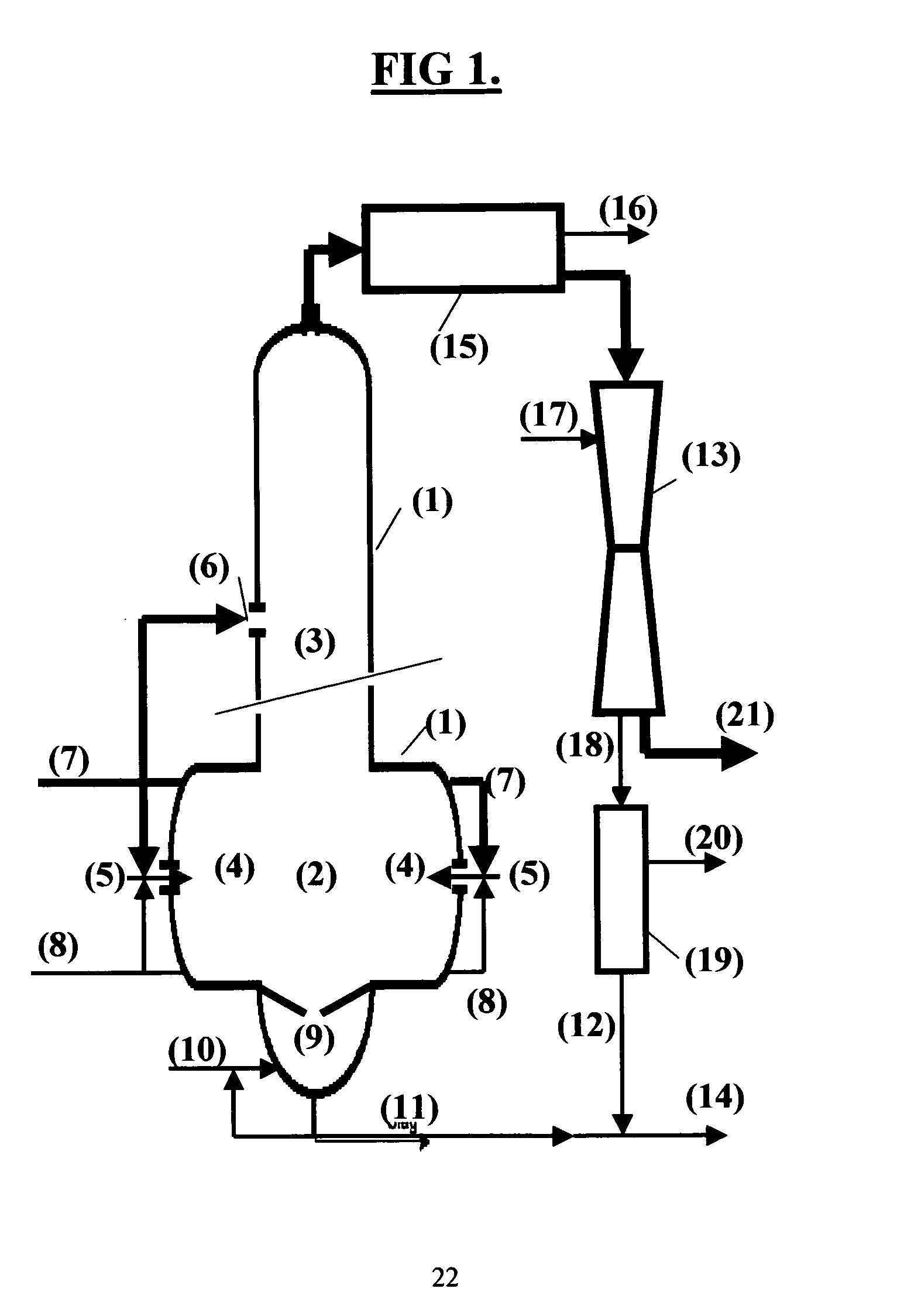Partial oxidation of cellulose spent pulping liquor
a technology of cellulose and pulping liquor, which is applied in the direction of gaseous fuels, combustible gas production, solvent media, etc., can solve the problems of reducing the efficiency of kraft applications
- Summary
- Abstract
- Description
- Claims
- Application Information
AI Technical Summary
Benefits of technology
Problems solved by technology
Method used
Image
Examples
Embodiment Construction
[0028] In chemicals recovery processes for alkaline pulping chemicals it is of great importance to preserve alkalinity of the cooking chemicals throughout the recovery process and to prevent undesired reactions between alkali and carbon dioxide. Carbon dioxide reacts readily with alkali carbonate and hydroxide in any aqueous phase present and eventually forms alkali hydrogen carbonate.
[0029] The recovery process of the present invention is specifically targeted to the efficient recovery of highly alkaline compounds and to preserve alkalinity of the chemicals recovered. Alkali hydrogen carbonate should not be present in the recovered pulping liquor. This is accomplished by a novel and innovative design of a gasification reactor further described in the following.
[0030] Gasification of carbonaceous material for the recovery of energy and chemicals is a well established technology and three basic process concepts are normally used: fixed bed gasification, fluidized bed gasification a...
PUM
| Property | Measurement | Unit |
|---|---|---|
| Fraction | aaaaa | aaaaa |
| Percent by mass | aaaaa | aaaaa |
| Pressure | aaaaa | aaaaa |
Abstract
Description
Claims
Application Information
 Login to View More
Login to View More - R&D
- Intellectual Property
- Life Sciences
- Materials
- Tech Scout
- Unparalleled Data Quality
- Higher Quality Content
- 60% Fewer Hallucinations
Browse by: Latest US Patents, China's latest patents, Technical Efficacy Thesaurus, Application Domain, Technology Topic, Popular Technical Reports.
© 2025 PatSnap. All rights reserved.Legal|Privacy policy|Modern Slavery Act Transparency Statement|Sitemap|About US| Contact US: help@patsnap.com


